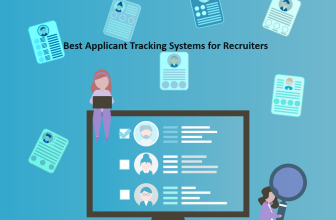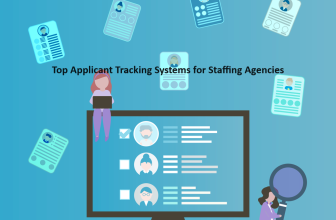What we cover
Understanding AWS Pricing Models
Amazon Web Services (AWS) offers a variety of pricing models to provide flexibility and cost savings for different usage patterns and commitments. The selection of a pricing model is a crucial decision that impacts how much a user pays for AWS services.
On-Demand Pricing
On-Demand Pricing allows users to pay for compute capacity per hour or per second, depending on the instance type, with no long-term commitments. Prices vary by instance family and region, providing a flexible payment option for sporadic workloads without upfront costs.
Reserved Instances
Reserved Instances (RIs) enable users to reserve cloud capacity for a 1 or 3-year period, offering discounts up to 72% compared to On-Demand rates. AWS provides two RI types: Standard RIs, which grant the most significant savings but are less flexible, and Convertible RIs, which offer lower discounts but can be exchanged for different instance families throughout the contract period.
Savings Plans
Savings Plans represent a flexible pricing model where users commit to a consistent amount of usage, measured in dollars per hour, for a 1 or 3-year term. AWS offers Savings Plans for EC2, Fargate, and Lambda, and discounts can mirror those of Reserved Instances, depending on the commitment made.
Spot Instances
Spot Instances allow users to bid on unused AWS capacity at potentially lower costs, up to 90% off the On-Demand price. Prices fluctuate based on supply and demand, and instances can be interrupted by AWS with two-minute notice if the spot price exceeds the bid or if capacity is needed elsewhere. They are suitable for fault-tolerant and flexible workloads.
Cost Optimization Strategies
Effective cost optimization in AWS involves specific strategies to ensure resources match demand without excessive spend. These strategies balance cost savings with performance efficiency.
Right-Sizing Instances
AWS customers should regularly evaluate their instance usage to ensure they are not over-provisioning. Right-sizing involves resizing instances to the scale that matches workloads. Users should consider downsizing or changing instance types if underutilization is detected. AWS provides recommendations for rightsizing through its Cost Explorer tool.
Instance Scheduling
Instance Scheduling is a strategy where instances are started or stopped based on predetermined schedules, reducing costs significantly when services are not needed 24/7. The AWS Instance Scheduler allows users to automate this process and can be especially effective for development, testing, or staging environments.
Leveraging Autoscaling
Autoscaling dynamically adjusts the number of active instances to meet demand, ensuring that users pay only for the compute resources they actually need. Autoscaling efficiently aligns resource expenditure with traffic patterns, which can lead to substantial cost savings.
Optimizing Storage Costs
AWS offers several storage services and tools to optimize costs:
- S3 Analytics offers insights into storage access patterns, aiding in decision-making for lifecycle policies.
- S3 Intelligent-Tiering automatically moves objects between different storage tiers based on changing access patterns, thus optimizing costs without compromising on performance.
By implementing these strategies, businesses can effectively manage their AWS costs and avoid unnecessary expenses.
Utilizing AWS Cost Management Tools
Efficient cost management is pivotal for businesses leveraging Amazon Web Services (AWS). AWS provides a suite of cost management tools designed to facilitate detailed tracking, effective budgeting, and optimization of resources for cost efficiency.
AWS Cost Explorer
AWS Cost Explorer is a powerful interface for analyzing and understanding AWS spending. It allows users to visualize their costs and usage patterns over time with an interactive interface. Utilizing features such as filtering and grouping, organizations can pinpoint expenditure trends. With a lookback period of up to 12 months, and projections for the next 12 months, it helps users to identify potential savings.
AWS Budgets
With AWS Budgets, users can set custom spending limits and get alerted when costs or usage are forecasted to exceed predefined thresholds. It promotes accountability and preemptive action with features like:
- Budgets for cost, usage, RI, and Savings Plans
- Email and Simple Notification Service (SNS) alerts
- Integration with AWS Cost Explorer for detailed analyses
AWS Trusted Advisor
AWS Trusted Advisor acts as an automated consultant, providing insights and recommendations to follow AWS best practices. It focuses on five categories: cost optimization, performance, security, fault tolerance, and service limits. For cost savings, it suggests actions such as eliminating idle resources or underutilized instances.
AWS Compute Optimizer
The AWS Compute Optimizer recommends optimal AWS resources for workloads to ensure performance efficiency and cost-effectiveness. It uses machine learning to analyze historical utilization data and suggests:
- Optimal sizes for Amazon EC2 instances
- Amazon EBS volumes
- AWS Lambda functions configurations
By implementing these recommendations, businesses can drive down costs without compromising on performance.
Implementing Usage and Commitment-Based Savings
To optimize costs within AWS, scrutinizing usage patterns and leveraging commitment-based discounts are crucial strategies. Through careful analysis and strategic commitments, companies can unlock significant savings.
Analyzing Usage Patterns
Organizations should begin by conducting a detailed analysis of their AWS usage patterns. This involves monitoring the consumption of resources over time, identifying peak usage periods, and determining which instance families are most utilized. Analyzing historical data can reveal trends that inform the selection of appropriate commitment-based savings plans.
- Monthly Usage Review: Break down usage by services such as Amazon EC2, Amazon RDS, etc.
- Peak Usage Identification: Pinpoint times of high demand that might benefit from reserved instances.
Commitments and Discounts
AWS provides different commitment-based discount options, such as Amazon EC2 Reserved Instances (RIs) or Savings Plans (SP), which are tailored to an organization’s specific usage patterns. These commitments typically last for one or three years and offer considerable discounts, with estimated savings reaching up to 72% when compared to On-Demand pricing. Organizations must assess their predictable usage to determine the level of hourly commitment that aligns with their needs.
- Reserved Instances: Offer discounts for a specific instance family and region.
- Savings Plans: Provide more flexibility by applying a discount to any instance family usage.
Volume Discounts and Consolidated Billing
Large-scale users of AWS can benefit from volume discounts, which are automatically applied as usage grows. For organizations with numerous accounts, consolidated billing is a feature that aggregates the AWS usage from all accounts to accelerate the achievement of volume discount thresholds. This not only simplifies the billing process but also compounds the savings.
- Consolidated Billing: Combine usage across accounts to maximize volume discounts.
- Usage Tiers: Recognize increased savings as total usage volume increases.
Leveraging Specific AWS Services
Effective cost savings in AWS is closely tied to strategic use of its diverse service offerings. Through understanding and deploying the right combinations of services, organizations can significantly reduce expenses while maintaining high performance and flexibility.
Amazon EC2 and EC2 Instances
Amazon Elastic Compute Cloud (Amazon EC2) provides scalable computing capacity in the AWS cloud, allowing businesses to use server instances that best fit their requirements. By selecting the appropriate EC2 instance types and utilizing Compute Savings Plans, organizations can optimize costs with up to 72% savings compared to on-demand pricing. It’s also crucial to choose the right region for your instances, as pricing varies across geographic locations.
- Optimal Instance Selection: Match instance types to workload needs, considering vCPU, memory, and storage.
- Scaling and Management: Use Auto Scaling to adjust capacity and manage instances more effectively.
AWS Lambda and Serverless
AWS Lambda enables serverless computing, allowing businesses to run code without provisioning or managing servers, paying only for the compute time consumed. This model offers high flexibility and can be more cost-effective for applications with variable workloads or those that need to scale quickly.
- Event-driven Architecture: AWS Lambda functions are triggered by events, minimizing running idle infrastructure.
- Pay-per-use Pricing: Charges are based on the number of requests and the duration of code execution, capped at a certain granularity.
Amazon RDS and Redshift
Amazon Relational Database Service (Amazon RDS) simplifies database administration, while Amazon Redshift offers a powerful data warehouse solution. Both services support an organization’s ability to manage databases effectively without incurring unnecessary costs from over-provisioning.
- Automated Backups & Snapshots: Lower administrative overhead while ensuring data persistence.
- Database Scaling: Adjust storage and compute resources with minimal downtime to accommodate fluctuating demands.
AWS Fargate and Containerization
AWS Fargate is a serverless compute engine for containers, removing the need to manage servers or clusters. This service provides the flexibility to run containers without managing the underlying infrastructure, perfectly aligning with the needs of modern, containerized applications.
- Resource Allocation: Specify and pay for resources per container, enabling precise budgeting and resource tuning.
- Integration with Amazon ECS and EKS: Seamlessly works with AWS container orchestration services to manage, scale, and secure applications.
By strategically leveraging these services, an organization can harness powerful, scalable solutions that align with its workload needs and financial goals, resulting in optimized AWS costs.
Advanced Cost-Saving Models and Tools
Leveraging advanced cost-saving models and tools on AWS can lead to significant cost reductions. AWS provides customers with sophisticated solutions that help optimize and manage spending, particularly through Savings Plans and usage optimization for compute resources.
Machine Learning and Sagemaker Savings Plans
Amazon SageMaker Savings Plans offer reduced rates on Amazon SageMaker usage—an important consideration for machine learning workloads. By committing to a consistent amount of SageMaker instance usage for a one or three-year period, customers can benefit from savings up to 72% compared to on-demand pricing. This is particularly beneficial for users with predictable, heavy workloads in machine learning projects.
High Performance and Spot Fleets
For high performance at lower costs, Amazon EC2 Spot Instances enable users to utilize unused EC2 capacity at up to 90% off the on-demand price. Spot Fleets can automatically launch the cheapest available instances across different EC2 Spot Instance pools, optimizing both cost and performance. This is suitable for fault-tolerant and flexible workloads where interruption can be managed.
Using AWS Savings Plans Effectively
AWS Savings Plans provide a way to save up to 72% with flexible pricing models across EC2, Fargate, and Lambda. Customers strategically commit to a certain amount of compute usage, measured in dollars per hour, over one or three years. To use Savings Plans effectively:
- Assess Usage: Analyze EC2 and overall AWS usage to estimate the consistent baseline.
- Choose the Plan: Select the most appropriate Savings Plan based on usage patterns—Compute Savings Plans for more flexibility or EC2 Instance Savings Plans for use with specific instance families.
- Monitor and Adjust: Continually monitor usage with tools like AWS Cost Explorer and adjust commitments as needed to ensure cost optimization and avoid underutilization.
Billing and Payment Management
Managing billing and payments efficiently is crucial for AWS users to ensure cost-effectiveness. A management account is responsible for consolidating billing across multiple member accounts. Each account within AWS is identified by a unique account ID, and it is part of the overall organizational account structure.
Users can view and manage their AWS costs and usage with a detailed report known as the AWS Cost and Usage Report. This report can be generated and accessed in a CSV format, allowing users to analyze data in their preferred analytics tools.
To effectively manage payments and billing, the following steps are essential:
- Set up consolidated billing through the management account to receive a single bill for all the member accounts.
- Configure automatic payments to deduct charges from the provided credit card or bank account associated with the management account.
- Regularly review and reconcile invoices to track charges and payments across all accounts.
- Use the AWS Cost and Usage Report to identify usage patterns and potentially unnecessary costs.
By adhering to these steps and regularly reviewing the AWS Cost and Usage Report, AWS users can optimize their spending and avoid surprises in their billing cycle.
Monitoring and Reporting
Effective cost savings in AWS can be significantly achieved through precise monitoring and reporting. This entails detailed tracking of cloud spend, assessment of resource usage, and strategic deployment of AWS tools geared for cost optimization.
Utilizing CloudWatch and Metrics
Amazon CloudWatch offers a suite of tools that allow users to observe their AWS resources and applications. CloudWatch metrics provide data points for a variety of AWS services such as EC2 instances and S3 buckets. Users should focus on metrics that reflect usage patterns and performance efficiency. For instance, tracking CPU and network utilization across different instance types and regions can help identify underutilized resources. Consequently, rightsizing them can lead to direct cost savings.
Implementing Cost and Usage Reports
AWS Cost and Usage Reports (CUR) give a granular view of the cloud spend. These reports can be configured to detail costs associated with specific AWS services, usage by hours or by resource, and even by linked AWS accounts. They are essential for any organization looking to optimize their AWS spend. Training in interpreting these reports is beneficial for both the cloud team and finance teams to understand where expenses are occurring and to identify opportunities for cost reduction.
S3 Analytics for Usage Analysis
Analyzing Amazon S3 usage, especially for organizations with heavy data storage and transfer requirements, can be critical for cost management. S3 Analytics tools facilitate the study of storage access patterns and lifecycle of the data stored in S3. Understanding these can inform decisions on data tiering or deletion of stale data, both of which can lead to significant cost savings. For example, moving infrequently accessed data to S3 Glacier or S3 Glacier Deep Archive can reduce storage costs while still keeping the data accessible if needed.
Optimization for Compute Workloads
Effective cost optimization strategies for compute workloads are critical for maximizing performance while minimizing expenses. Exploring various instance types and configurations can lead to significant savings.
Instance Types and Performance
When optimizing compute workloads, it is essential to select the right EC2 instance types which align with the workload’s requirements. AWS provides a variety of instances optimized for different use cases such as compute-optimized, memory-optimized, and storage-optimized. Utilizing Amazon EC2’s diverse selection offers the ability to match instance performance attributes with workload demands, potentially lowering costs without compromising on performance.
- General-purpose instances: Suitable for a wide range of workloads.
- Compute-optimized instances: Ideal for compute-bound applications that benefit from high performance processors.
- Memory-optimized instances: Designed to deliver fast performance for workloads that process large data sets in memory.
EC2 Autoscaling Group Configuration
EC2 Autoscaling ensures that the number of EC2 instances adjusts automatically according to predefined conditions and load predictions, contributing to cost effectiveness. Properly configured autoscaling can respond to traffic fluctuations, maintaining performance and minimizing costs by adjusting the fleet size as necessary.
Key configurations include:
- Desired Capacity: The ideal number of instances at any given time.
- Minimum Size: The least number of instances to run, ensuring baseline performance.
- Maximum Size: The upper limit to prevent cost overruns during demand spikes.
Compute Workloads on AWS
Compute workloads typically encompass the execution of applications that process data, handle transactions, or perform computational tasks. AWS offers varied services and tools to manage these workloads effectively.
- AWS Lambda: Ideal for workloads that are event-driven and can benefit from a serverless architecture, potentially reducing costs by charging for the actual compute time used.
- Savings Plans: Commitment-based plans that provide cost savings, applicable to different compute services.
- Spot Instances: An option for flexible workloads that can tolerate interruptions, offering up to 90% cost savings compared to On-Demand prices.
Each of these methods requires analysis of the specific needs and patterns of the workload to ensure that performance is maintained while optimizing costs.








